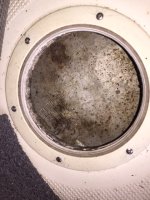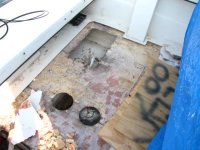Avidmagnum12
Member
- Joined
- Mar 23, 2013
- Messages
- 731
- Reaction score
- 17
- C Dory Year
- 2011
- C Dory Model
- 25 Cruiser
- Vessel Name
- C-Otter
Just finished my list of projects on my new to me CD-25. So time to start a new one. The Yamaha fuel gauge (analog) has been very inaccurate. At empty mark I have about 25 gals in the tank. When the gauge shows full I can still put in about 15 or more gallons. I think that the problem could be the fuel sender. Took off the access cover and no sender.....oh there it is....about 9 inches or so farther back. Not too handy!
To change out the sender it looks like I would have to remove the deck or cut a new access hole. :crook
Any other ideas?
I have a Garmin 4008 MFD on the C-Otter and a 2010 Yamaha 200 HPDI outboard. Looking at getting the engine fuel flow data to the Garmin. If the fuel burn can be totalized the tank gauge would not be such a major factor.
Lowrance makes a Yamaha to NMEA 2000 adapter. Part number 000-01200-37. I have a NMEA 2000 network on the boat already. Think it will work with the Garmin. Anyone try this out?

I sure did like the plastic tanks on the 22 commuter we had. Always knew how much fuel we had. But we do love the space of the 25.
To change out the sender it looks like I would have to remove the deck or cut a new access hole. :crook
Any other ideas?
I have a Garmin 4008 MFD on the C-Otter and a 2010 Yamaha 200 HPDI outboard. Looking at getting the engine fuel flow data to the Garmin. If the fuel burn can be totalized the tank gauge would not be such a major factor.
Lowrance makes a Yamaha to NMEA 2000 adapter. Part number 000-01200-37. I have a NMEA 2000 network on the boat already. Think it will work with the Garmin. Anyone try this out?

I sure did like the plastic tanks on the 22 commuter we had. Always knew how much fuel we had. But we do love the space of the 25.

